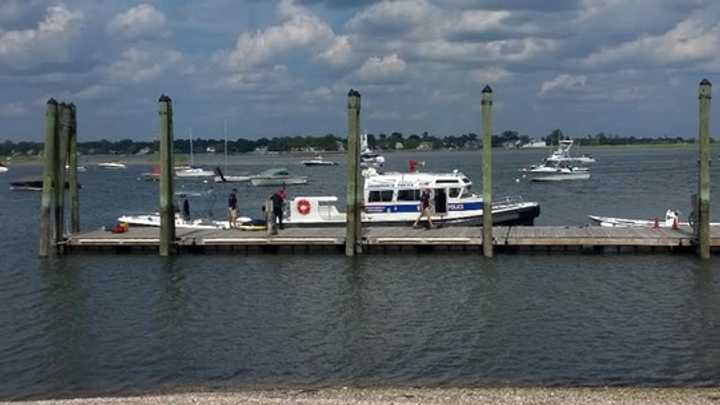"On the water, as on land, safety is everyone’s responsibility," police said in a statement. "Be alert, be careful and be prepared. An accident can happen very quickly."
Emily Fedorko, who would have been a junior this fall at Greenwich High School, was killed while water tubing Wednesday. Aug. 6, off Greenwich Point. She died after she fell off her tube and was run over by the boat as it returned to pick her up, police said. A second girl suffered severe leg cuts and injuries in the accident, police said.
The U.S. Coast Guard says, “Each year hundreds of lives are lost ... thousands are injured ... and millions of dollars of property damage occurs because of preventable recreational boating accidents on U.S. waterways. Too often pleasure outings turn tragic. You — as a boat operator, passenger or concerned individual — can make a difference.”
Under Connecticut law, any person being towed behind a vessel under power, such as for water skiing, tubing, wakeboarding or wakesurfing, is required to wear a USCG-approved personal flotation device at all times regardless of age.
The boat operator is required to have a responsible observer at least 12 years of age facing the skier to assist the operator and monitor the progress of the water skier.
The operator of the vessel and the water skier are responsible for operating in a manner that does not harm or strike another person or vessel. Water skiing is forbidden between a half-hour after sunset until sunrise or when visibility is restricted to less than 100 yards.
Additionally, for tubing, boat operators must remember that tube riders do not have the directional control that water skiers have. Take these special precautions to ensure a fun and safe time:
- Riders are required to wear a USCG-approved life jacket at all times, regardless of age.
- Follow manufacturers' recommendations on capacity, weight restrictions, number of riders, age limits and maximum towing speeds.
- Securely fasten the line. Use heavy-duty line designed for towing tubes. Check its condition often.
- Turn off the engine and count to 10 before allowing a person into the water. Remember the propeller continues to spin when the engine is off.
- Balance the weight on the tube, and properly position tubers based on the tube's characteristics.
-
Ensure a responsible spotter of at least 12 years of age is watching the tuber. Make sure the tuber and the spotter understand and communicate with hand signals. Always listen to the tuber. The operator of the vessel should not be watching the tuber.
-
Know the area you will be tubing. Maintain a safe distance between the tube, other boaters, piers or docks.
-
Use caution when making turns. Tube speed increases during a turn. Riders can fall off or be thrown. Never have the tuber on the inside of a turn. Plan ahead of the turn to make sure the tube will have enough room to pass safely.
-
Slow the boat when needed, especially when crossing wakes to avoid back and other injuries.
-
Approach a rider in the water with caution. Always approach on the operator’s side of the vessel into the
wind/current. Then turn the engine off.
-
Never back up to a person or allow them to use the propeller to re-enter the vessel.
-
Make sure the vessel operator, spotter and tubers are alert and sober.
-
Securely stow all gear and tube. Never coil the line for the tube while the boat is in gear and the tube is in the water because it may become tangled in the propeller and cause injury.
Two helpful websites to understand best practices and the law on boating safety are www.ct.gov/deep and www.uscgboating.org.
Click here to follow Daily Voice Greenwich and receive free news updates.
